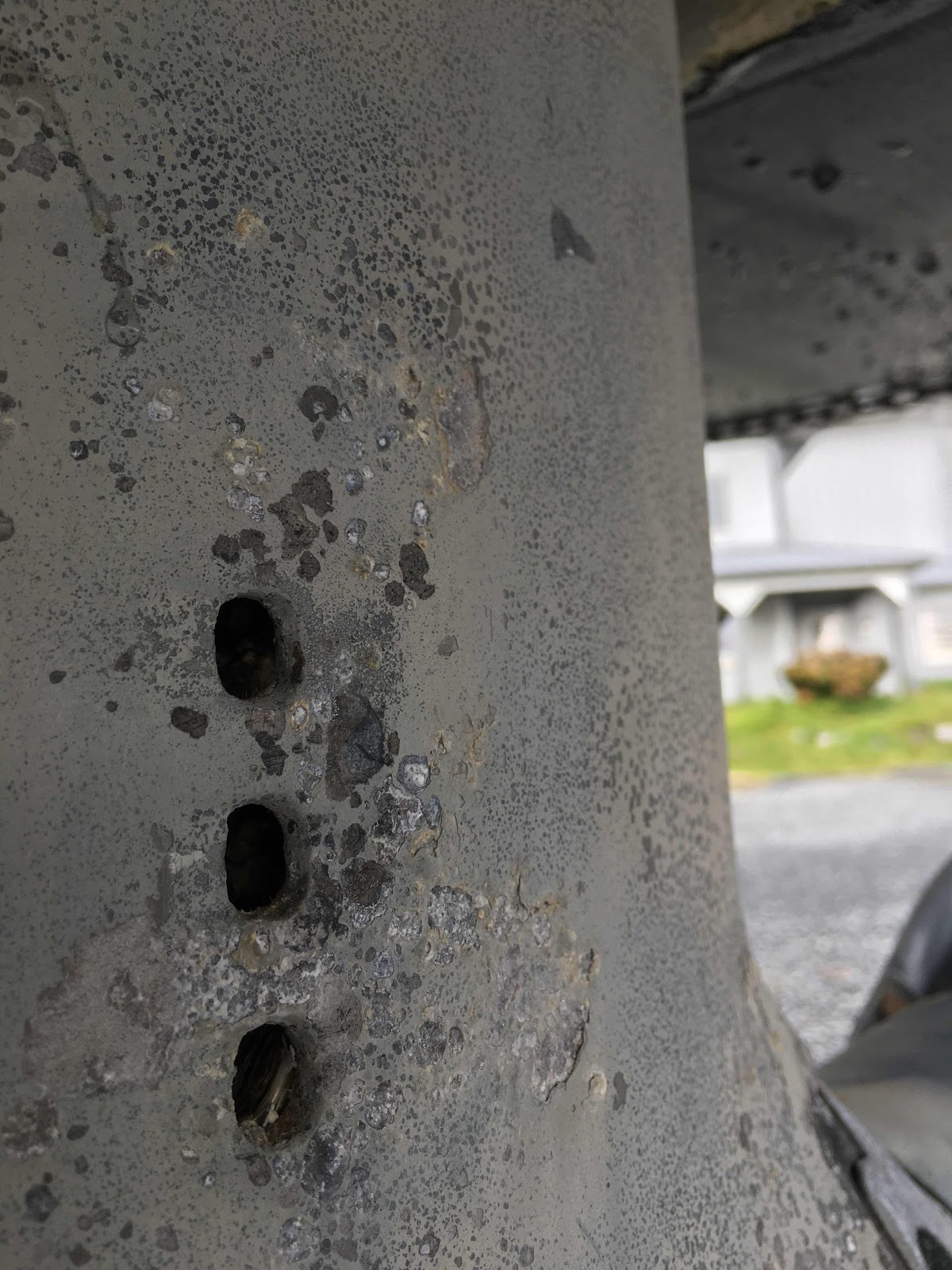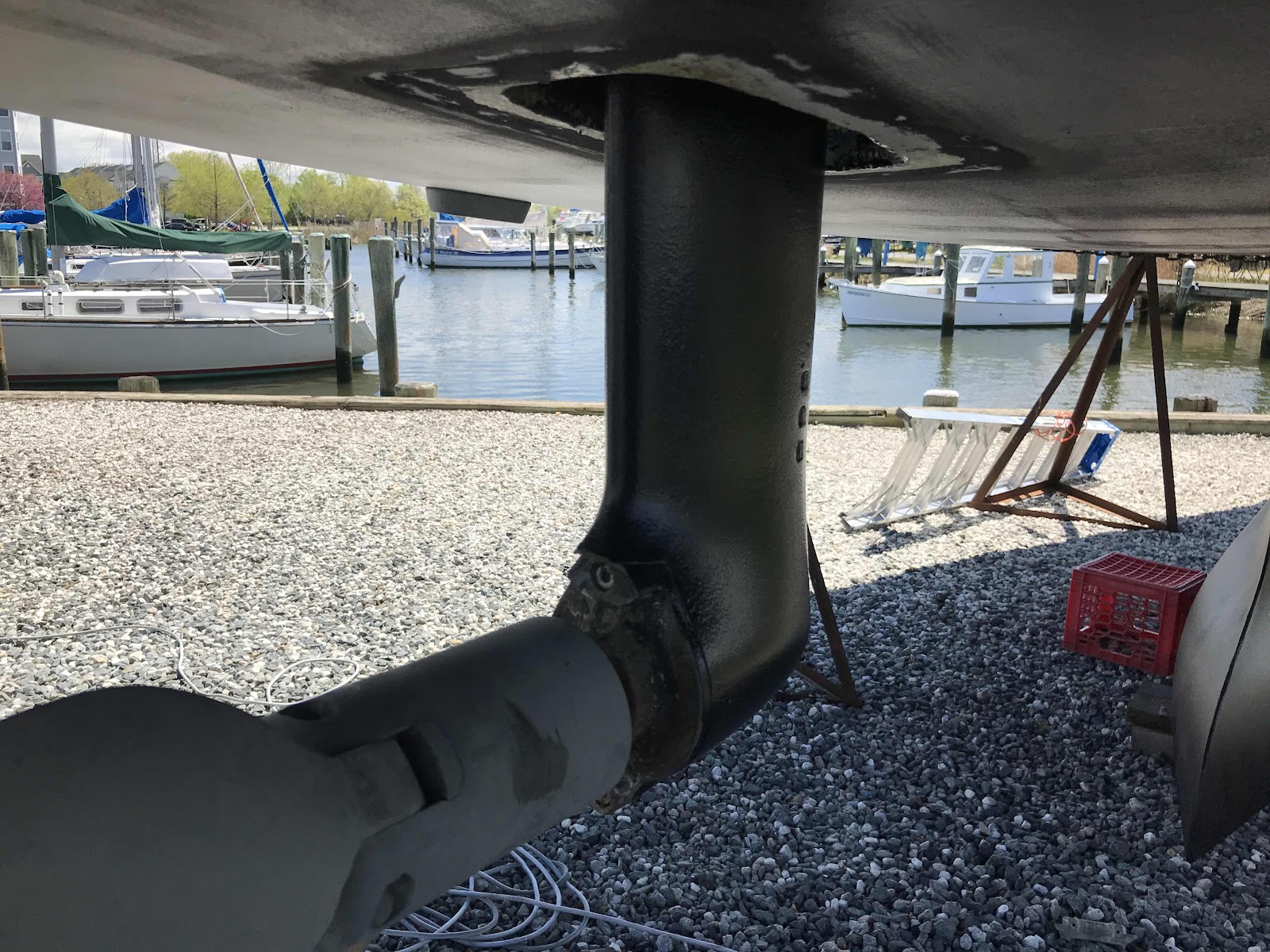George has been spending the past two weeks getting Breeze On ready to go back into the water. First he sanded the bottom in preparation for two new coats of bottom paint. He had quite a bit of trouble finding the paint, though. Last year he ordered the paint from Defender in CT. A can was damaged in transit requiring Defender to send more. This delayed the entire painting process. Due to that experience in having paint shipped he decided to look locally. No luck. He finally found two gallons—just the amount he needed—at Fawcett’s in Annapolis. George gave the clerk his credit card information over the telephone and asked that the paint be set aside. We hopped in the car and drove the hour and a quarter to Fawcett’s. The clerk to whom George spoke on the phone was not in the store when we arrived. The clerks who were there looked all around and could not find the receipt nor the paint. After about 45 minutes they determined that the first clerk had never set the paint aside and it was sold to someone else before we arrived at the store. 
Saildrive corrosion

Saildrive corrosion

Saildrive corrosion

Newly sandblasted, epoxied, and painted saildrive

Zincs we didn’t know about

Actuator arm has been disconnected to allow manual operation.

Bow thruster door won’t fully close

Fully closed thruster
On our way home George decided to stop at a small store at the Ferry Point Marina just across the Choptank River from where we live. Until this year we didn’t even know there was a store at that marina. George found the paint he needed there. It was a higher price but at least he was able to buy it and begin painting. Everything was going well with the sanding and painting until it was time to paint the saildrive. George had noticed last year that there appeared to be a bit of corrosion on the aluminum saildrive. Jimmy, at Generation III, told George last year that the saildrive should be fine if George sanded it down well before painting it with saildrive paint. George did that but thought the corrosion had advanced from last year. The biggest question was what was making it corrode. If the corrosion continued the saildrive could eventually fall off. The saildrive’s sacrificial anode—also known as a zinc—should have protected the saildrive. The zinc hadn’t degraded at all so it didn’t appear to be doing its job. (Several years ago I wrote a blog post about zincs and their function.) After a lot of research, consultation, and lost sleep, George decided that the problem was due to the zinc not making proper contact with the sail drive and the copper-containing bottom paint was too close to the aluminum saildrive. Jimmy sandblasted, epoxied, and painted the saildrive and now it looks as good as new.
Saildrive corrosion
Saildrive corrosion
Saildrive corrosion
Newly sandblasted, epoxied, and painted saildrive
The next issue involved the retractable bow thruster. George lowered the thruster and disconnected the power so it wouldn’t automatically retract after a few minutes, as it is designed to do. He replaced the zincs on both propellers, turned the power back on then pushed the button to retract the thruster. The thruster retracted partway, then opened again. It did that two more times before it shut itself off. The thruster is designed to make three attempts to close, then shut off, if there is something in the way of the door, such as an anchor chain or a mooring line. George and his friend, Ray, used flashlights to examine the thruster and found nothing in the way. The thruster was shuddering when opening and closing so we thought it might be in need of lubrication. Also, when combing through the Quick Bow Thruster documents we found information about two additional zincs that should have been checked and replaced. George ordered the new zincs and replaced the old ones.
Zincs we didn’t know about
George and Ray disconnected the actuator arm of the thruster so they could lower and raise it manually. That helped but it still did not fully close. George greased the moving parts and that helped a little more but the hatch still did not close fully. George made several calls to Paul, the technical advisor at Quick USA, who initially seemed helpful. Paul warned George not to make any adjustments to the actuator arm or micro switches although the documents that came with Breeze On included instructions for making these adjustments. By this morning, after losing more sleep and running out of any other options, we both decided it was worth trying to make small adjustments to a connection at the end of the actuator arm to see if it made any difference. We then went to the boatyard and worked in the rain. George was inside the cabin making the adjustments and I stood under the boat watching the thruster. Right away we could tell that the adjustments were making a difference and now the thruster finally closes fully.
Actuator arm has been disconnected to allow manual operation.
Bow thruster door won’t fully close
Fully closed thruster
Comments
Post a Comment